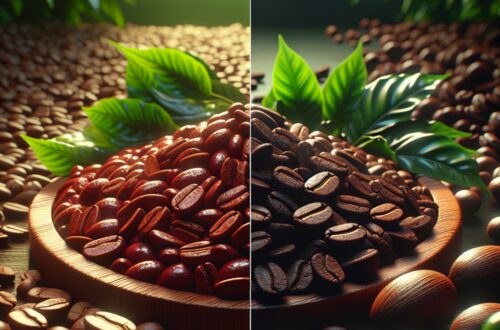Exploring the Robust World of Robusta Coffee Beans
Robusta coffee beans, scientifically known as Coffea canephora, have carved a distinctive niche in the global coffee market. With their unique characteristics and significant differences from the more widely known arabica beans, Robusta beans offer a compelling story of resilience, flavor, and caffeine strength. This article delves into the realm of Robusta coffee, highlighting its cultivation, superiority, comparison with arabica, and its role in coffee blends.
Introduction to Robusta Coffee Beans
The Coffea canephora plant, or Robusta, is native to Sub-Saharan Africa and distinguishes itself from its arabica counterpart through its robust flavor profile and higher caffeine content. Robusta beans are not only celebrated for their bold taste but also for their ease of cultivation, particularly in regions where arabica beans may struggle. Below we explore the key contrasts between Robusta and arabica beans and the primary growing regions for Robusta coffee.
The Superiority of Robusta Coffee
What sets Robusta apart? The answer lies in its caffeine content, which is nearly double that of arabica beans. This not only contributes to its stronger flavor but also enhances its pest resistance, making Robusta an easier coffee crop to cultivate. This section explores the benefits of Robusta’s bold flavor in coffee blends and its cultivation advantages.
Robusta Coffee Production
The production of Robusta coffee is a testament to its adaptability and resilience. Key producers such as Vietnam, Brazil, Indonesia, and Uganda have contributed significantly to the global availability of Robusta beans. The table below presents the production volumes in tons from the leading Robusta producing countries:
| Countries | Production (tons) |
|---|---|
| Vietnam | 1,650,000 |
| Brazil | 335,800 |
| Indonesia | 164,500 |
| Uganda | 240,000 |
This rise in Robusta production is indicative of its growing popularity and the unique characteristics of the beans which are gaining preference among consumers and producers alike.
Robusta vs Arabica Beans: A Comparison
When comparing Robusta to arabica beans, several aspects stand out. From the flavor profile, where Robusta offers a more pronounced and bold taste, to the caffeine content, which is substantially higher in Robusta, these beans cater to a distinct market segment. This section elaborates on the comparative unique selling points of Robusta against arabica.
Using Robusta Beans in Coffee Blends
The inclusion of Robusta beans in coffee blends is strategic, serving to elevate the caffeine content and impart a robust flavor. Economically, Robusta beans can also make blends more cost-effective without compromising on taste quality. We explore the advantages and impact of blending Robusta with arabica beans below.
The Future of Robusta Coffee
The trajectory for Robusta coffee looks promising. With a growing consumer interest in its distinctive flavor and the potential for sustainable cultivation practices, Robusta is poised for innovation. This section sheds light on the advancements expected in the cultivation, production, and consumption of Robusta coffee.
As the appreciation for Robusta coffee continues to grow, its narrative is one of evolution and rediscovery. With its stronger flavor, higher caffeine content, and economic benefits, Robusta is making a definitive mark on the global coffee scene. Whether through the lens of production, consumption, or its role in blends, the robust profile of Robusta beans is undeniably enriching the coffee experience for enthusiasts around the world.
For those intrigued by the diversity of coffee flavors, exploring other unique coffee drinks can further enhance your coffee journey. Discover more about different coffee varieties and the perfect coffee machines to brew them here.
Shop at Breville now!
https://breville.oie8.net/oqDqrE
Shop RobustaCoffee Beans at Amazon now!
Click here





